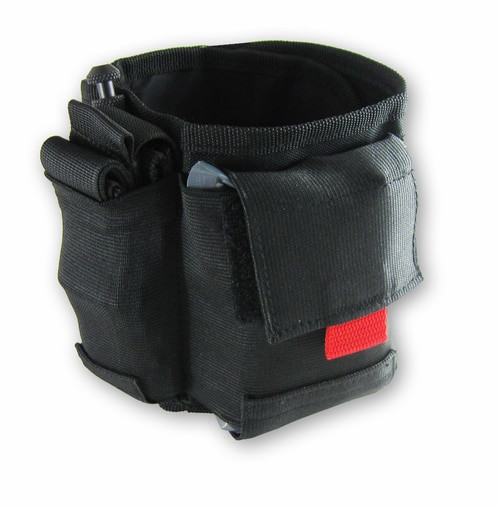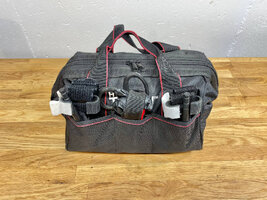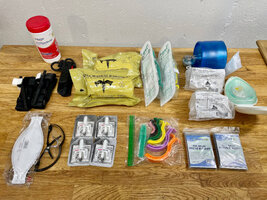Boghog1
NES Member
Looking for a FAK for daily carry, on body so thinking about ankle carry, figure tourniquet, celox gauze, cpr pocket shield. chest seal. Is there anything else? does someone make a kit already? preferred set ups?
If you enjoy the forum please consider supporting it by signing up for a NES Membership The benefits pay for the membership many times over.
 www.rescue-essentials.com
www.rescue-essentials.com
The only thing about an ankle kit is it gets wet and dirty. I currently just use my ankle carry one inside of my little tiny first aid one.Looking for a FAK for daily carry, on body so thinking about ankle carry, figure tourniquet, celox gauze, cpr pocket shield. chest seal. Is there anything else? does someone make a kit already? preferred set ups?

 www.rescue-essentials.com
www.rescue-essentials.com
I EDC the Ryker Ankle First Aid Kit.Looking for a FAK for daily carry, on body so thinking about ankle carry, figure tourniquet, celox gauze, cpr pocket shield. chest seal. Is there anything else? does someone make a kit already? preferred set ups?
Just a note that latest CPR training no longer calls for blowing into the patient's mouth. Only chest compression.Looking for a FAK for daily carry, on body so thinking about ankle carry, figure tourniquet, celox gauze, cpr pocket shield. chest seal. Is there anything else? does someone make a kit already? preferred set ups?
the one I took a month ago had both with breaths being optionalJust a note that latest CPR training no longer calls for blowing into the patient's mouth. Only chest compression.
Basically agree on everything. I don't carry a kit on myself, but I keep one in my truck and bring it with me to the bench at the range. I also keep one tourniquet in each front door pocket in my truck, and hand wipes in each rear door cupholder. I know decompression needles are what the cool guys teach in TCCC and my medical director allows me to do it at work, but I don't live 2 hours from an EMS response. I'm focusing on bleeding control, airway, and keeping them warm. I'm about task saturated at that point if I'm by myself.As people have mentioned above Ankle kits are not the greatest. If you are dead set on one I have always pointed people to buying direct from North American Rescue for any kit (in your case their ankle trauma kit). In reality you will use bandaids and tape more than anything else.
To touch a little on some points others have made so far,
-Lay person CPR aka AHA “Heart Saver” no longer recommends mouth to mouth, and even with a barrier device present advises focusing on good quality compressions and early defibrillation as both are they only interventions that have proven to lead to improved outcomes. Mouth to mouth only becomes advised when the etiology leading to the arrest is thought to be respiratory in nature. This is most often only the case in young infants, and children. When it comes to a child are you that concerned having a barrier device present? I know my answer to that question, but you have to ask yourself that and come to your own decision.
-Quick clot, and hemostatics in general have minimal improvement in stopping bleeds. Compressed gauze that is properly applied directly to the source in conjunction with proper packing that places adequate pressure has been found to lead to hemostasis equally as often. Where hemostatics excel is in reducing the time to reach hemostasis. I only say this as people far too often focus on hemostatics which are costly compared to compressed gauze, and then skimp out on other important pieces of a kit due to lack of funds. When it comes to hemostatics kaolin based products (Quick Clot) has been the standard as it works by activating the clotting cascade. Chitosan (Celox) doesn’t work by activating the clotting cascade but by instead creating an expanding gel like “glue” and for a long time has been considered 2nd line.
-Decompression needles… be extremely careful. Needle decompression has significant risks, and is rarely indicated. This is a procedure that I believe people are misguided with its frequency of occurrence and risk. To put this into perspective this is a procedure that Basic EMTS who staff most ambulances are unable to perform. This is reserved for ALS level providers operating as Paramedics. What patients with penetrating chest trauma need is a thoracostomy and ultimately a chest tube. Even with training and authorization I know few who would ever preform a needle decompression out side of the professional setting. If you are dead set on having this capability I recommend the North American Rescue SPEAR, or a similar needle that is 10 gauge. The standard 14 gauge is just too small.
-Tourniquets. True CAT’s are good to go just make sure that you get a real one from a reputable vendor. If you have a child I recommend the SAM XT tourniquet as it utilizes a mechanical lock that will allow application on smaller limbs. The SAM XT is also great in the fact that it solves the number one issue with lay person application which is putting the TQ on to loosely prior to utilizing the windlass.
-Epi Pen. Great to have but they are expensive, require a prescription, and epinephrine is pretty sensitive to temperature extremes.
-Narcan. It’s everywhere now, and you can usually find programs giving it away for free.


